Indoor climbing plants not only make your living space more vibrant but also evoke a sense of closeness to nature. With their vitality and allure, indoor climbers have become a popular trend in interior decoration. Apart from creating focal points for space, they can also improve air quality and create a healthier living environment. Let’s explore the beauty and benefits of indoor climbing plants through this article.
Different Types of Indoor Climbing Plants
Golden Pothos
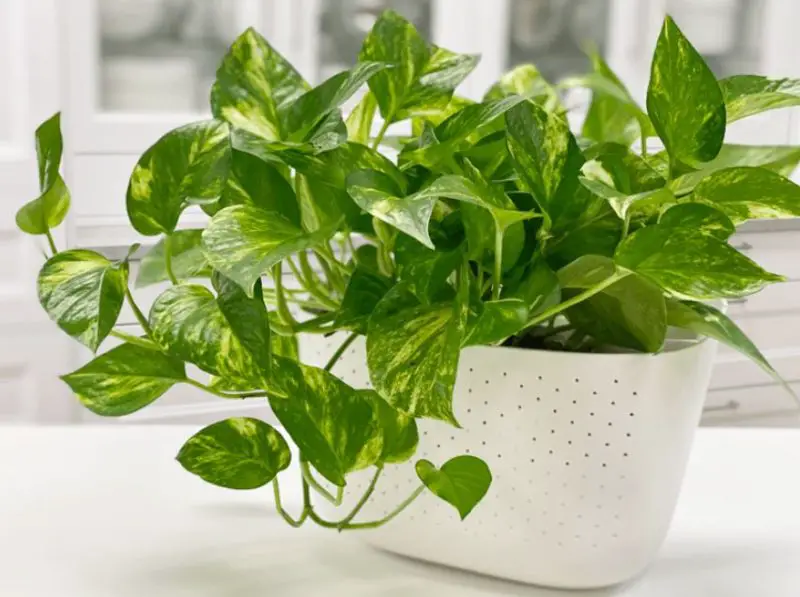
Golden pothos, or Epipremnum aureum, are a common indoor plant that grows quickly and easily in nearly any environment. Put it in bright, indirect sunlight for best development, and water it once the top few inches of soil are completely dry. It’s time to water your plants if they wilt or curl inward. This hardy plant brings greenery and beauty to any area—even a bathroom—with very little work.
Passion Flowers
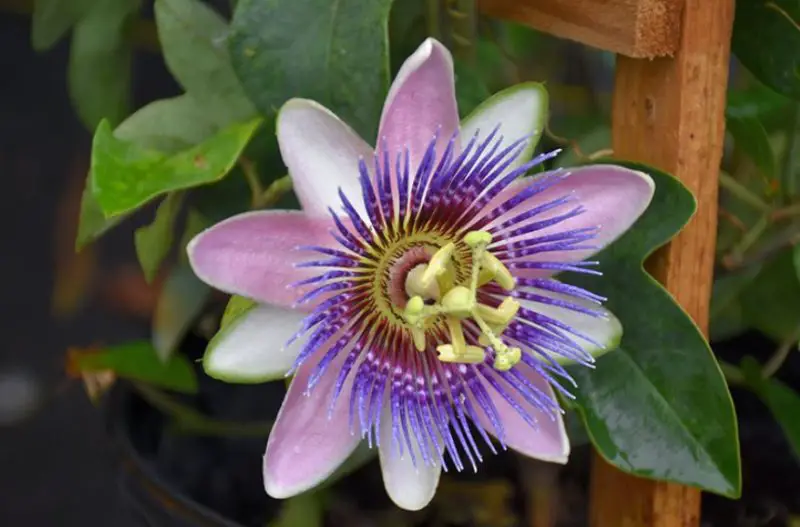
Passion flowers, or Passiflora spp., are distinguished in outdoor environments by their vivid blossoms. They need special attention indoors and are not advised for novices. They can tolerate extreme heat near windows and grow well in direct sunlight, unlike many other houseplants. Their contentment is ensured by monthly fertilization, high humidity, and regular watering throughout growth seasons. Your passion flower might even blossom indoors with careful maintenance, bringing some beauty into your room.
Sweet Potato Vine
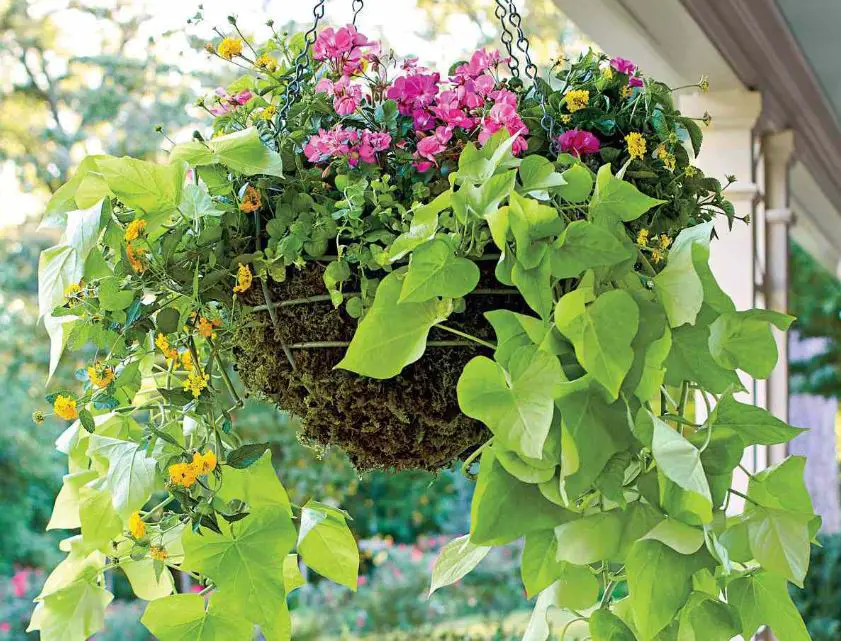
Ipomoea batatas, or sweet potato vine, is an excellent choice for novices as it needs little maintenance and grows quickly. Give it regular watering and place it in bright, indirect light. It’s a great plant for travelers because it can withstand some drought even if it enjoys damp soil. Its growth requires regular pruning, but it spreads readily, so you can keep many plants in different parts of your house or share them with friends. Take ease in admiring its thick mat of vivid flora.
Japanese Ivy
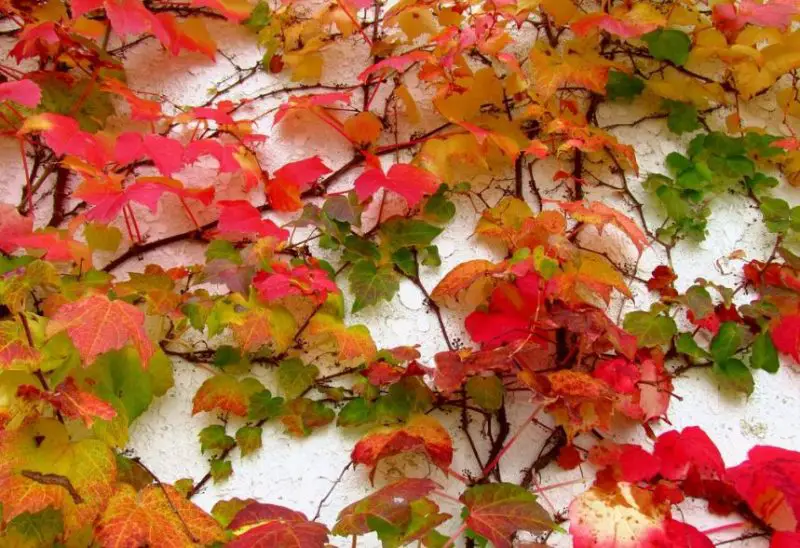
Similar to English Ivy, Japanese Ivy (Hedera rhombea) is a low-maintenance houseplant that grows well indoors. It is an excellent choice for indoor growth because of its aerial roots, which make climbing easier. Although it can handle a range of light conditions, growth is stimulated by strong, indirect light. When the soil dries out, water it, and if you’d like, provide a trellis or other climbing support. Savor the ease of its care routine and the beauty of its blossom clusters.
Krimson Queen Hoya

The gorgeous climbing plant known as the Krimson Queen Hoya (Hoya carnosa ‘Krimson Queen’) is easily recognized by its variegated foliage. It grows best in well-draining soil with bright, indirect sunlight, unlike the Krimson Princess Hoya. In between irrigations, let the topsoil dry out. It grows slowly, but patience will be rewarded with lovely, long vines with waxy leaves. Its beauty is evident when it is placed in a wicker container against a dark background.
Porcelain Flower Plant
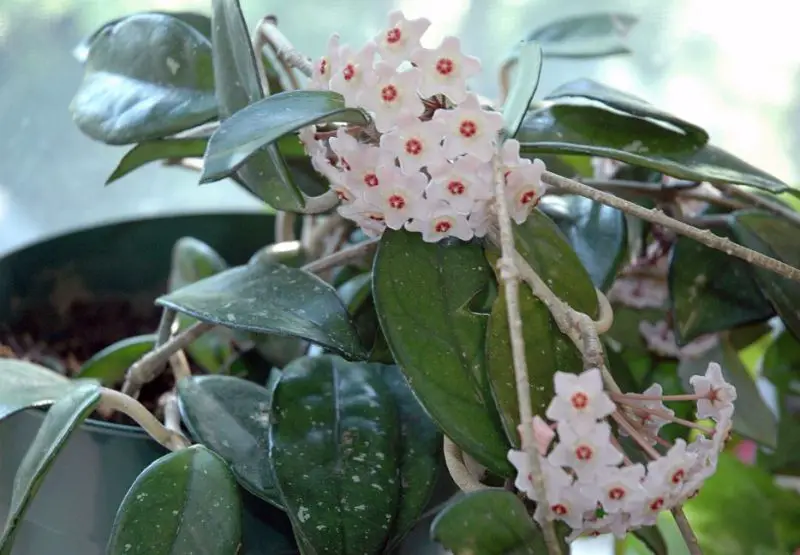
When given the proper growing conditions, the Porcelain Flower Plant (Hoya publicalyx), commonly known as the wax plant, may be a pleasant addition to any indoor garden. It thrives in indirect sunlight and needs to be watered frequently when the topsoil dries out. Make sure the foliage stays moist by spraying it frequently, especially during the winter, to encourage the best possible development. You can anticipate stunning clusters of star-shaped, pinkish-white blooms to grace your plant with the right care.
Monstera Peru
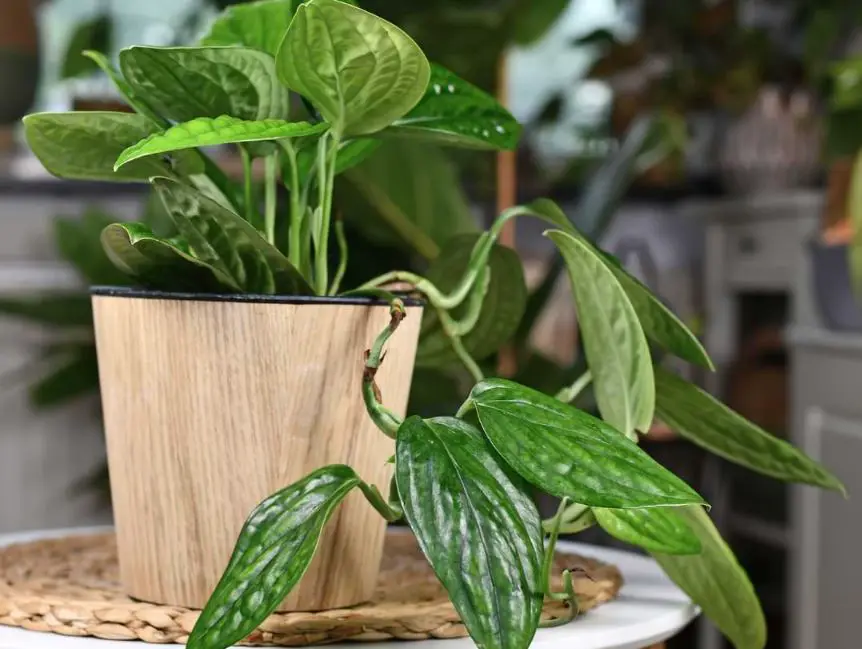
A distinctive feature of the Monstera Peru (Monstera karstenianum ‘Peru’) is its tall, ridged, dark green leaves. Unlike other Monstera cultivars, it can withstand lower light levels and thrive in strong, indirect light. Water the soil sparingly, letting the top few inches dry out completely in between applications. These humidity-loving plants are ideal for places like bathrooms that have greater relative humidity levels. In your indoor garden, savor the unique elegance of its puckered leaves.
Lemon Lime Philodendron

With its eye-catching yellow foliage, the Lemon Lime Philodendron (Philodendron hederaceum ‘Lemon Lime’) stands out in any house. Although growth may be slower, it can tolerate reduced light levels and grows well in a variety of indoor environments. To avoid overwatering, let the topsoil dry out in between waterings. Pruning unevenly growing leaves on vines will help you keep a dense, robust plant. Take in the vivid glory of this philodendron indoors.
Satin Pothos
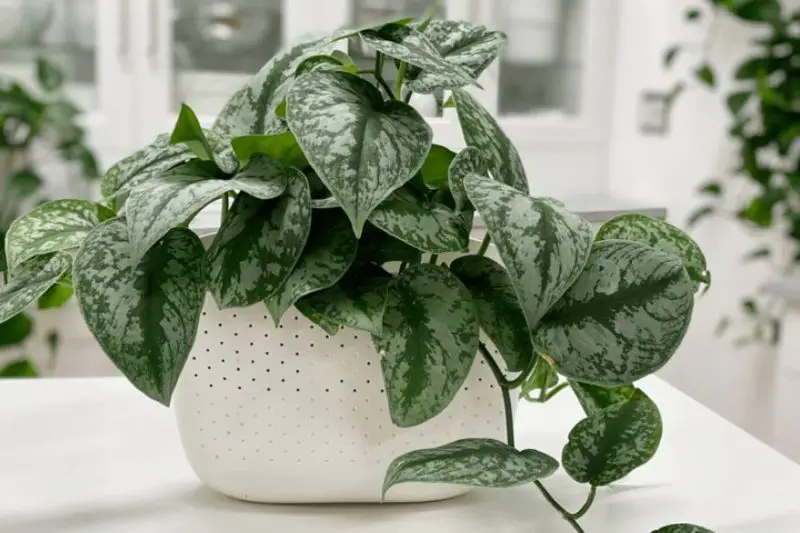
A gorgeous plant with silky, spotted leaves, the Satin Pothos (Scindapsus pictus) grows well as a climber in hanging planters or on trellises with little maintenance. Since it is susceptible to sunburn, place it in bright, indirect light to avoid becoming sunburned. To prevent root rot, let the topsoil dry out in between waterings, but spritz the leaves often to keep the soil moist. Appreciate this graceful plant’s elegance against a dark background.
Pink Princess Philodendron
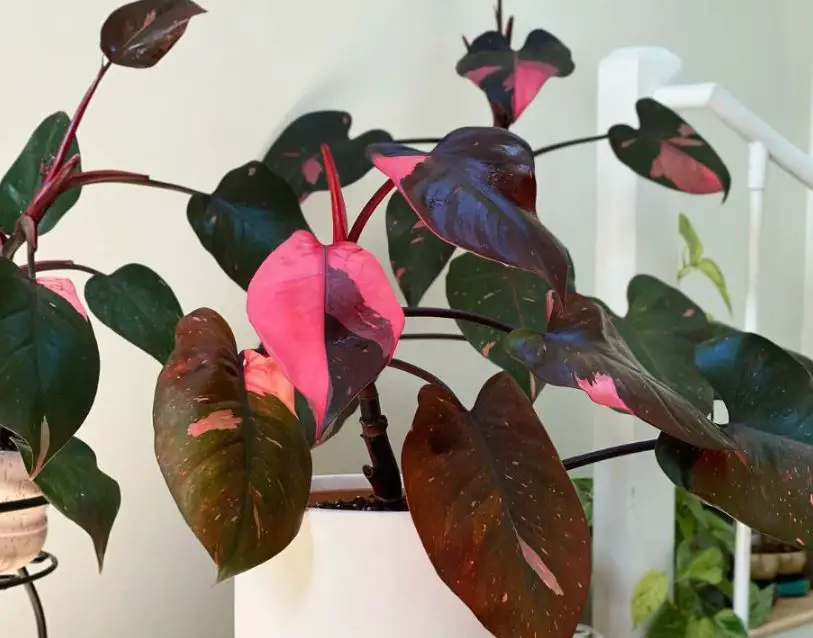
A popular houseplant, the Pink Princess Philodendron (Philodendron erubescens ‘Pink Princess’) is prized for its variegated dark-green and pink leaves. Give it plenty of strong, indirect light to maintain its beautiful beauty. To avoid root rot, water the soil only after the upper half has dried up. The magnificence of this philodendron, however hard to come by, will undoubtedly be the focal point of any indoor oasis or tropical scene.
Wax Ivy
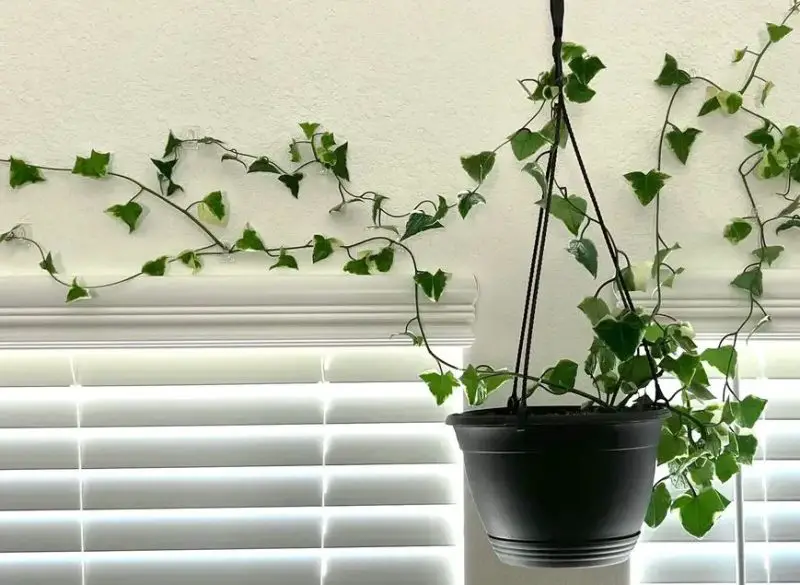
Senecio macroglossus, often known as wax ivy, is a low-maintenance houseplant that can tolerate a variety of growth environments. In spite of its name, this succulent likes soil that drains well for cacti or succulents; it should be allowed to dry out in between waterings to avoid root rot. To promote flowering, put it somewhere bright, and admire its beauty as it falls from a red hanging basket. The Wax Ivy brings elegance and foliage to any indoor environment with little maintenance.
Cinnamon Hoyas

Under ideal circumstances, cinnamon Hoyas (Hoya lacunosa) produce charming, low-maintenance houseplants with tiny clusters of white blooms. They prefer to dry out in between waterings to prevent overwatering, just like other hoyas, and they grow best in bright, indirect light. For optimal effects, keep the top few inches of soil dry. Admire the elegance of their cinnamon-scented blossoms as they bring appeal into your interior.
Brazil Philodendron
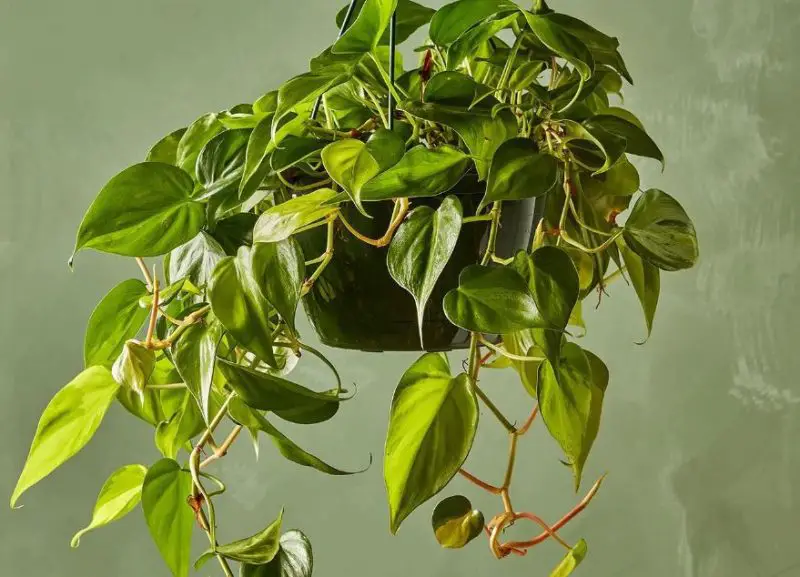
The vibrant green and yellow variegated leaves of the Brazil philodendron, or Philodendron hederaceum ‘Brasil,’ bring life to any area. It grows best in bright, indirect sunshine and is happy with low-maintenance care. When the top few inches of soil become dry, water deeply, making sure that good drainage is maintained to avoid root rot. The Brazil philodendron is a fantastic addition to your collection of indoor plants because of its attractive leaves and low maintenance requirements.
Algerian Ivy
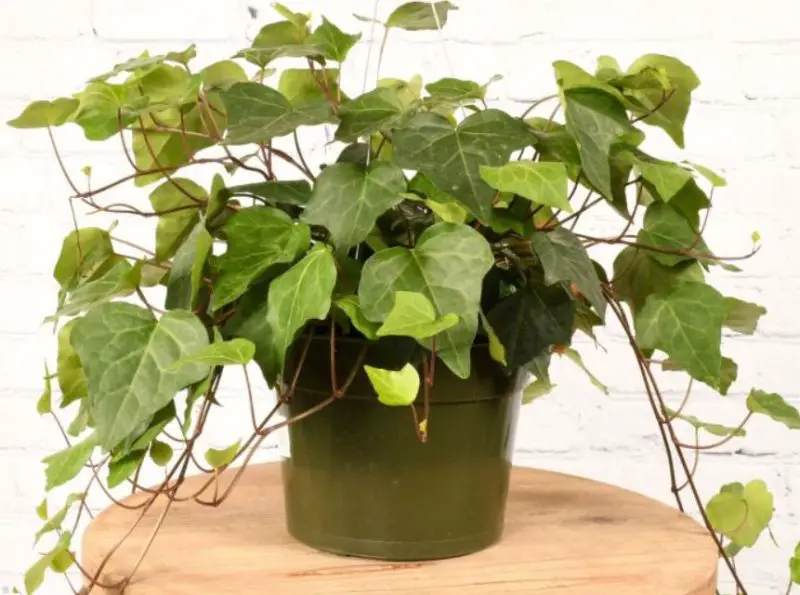
The beautiful variegated leaves of Algerian ivy (Hedera canariensis) are highlighted by rich crimson stems. The leaves are dark green and white. Growing well in medium light, make sure newly emerging leaves keep their variegation by supplementing with little brighter light when necessary. To avoid overwatering, use water when the topsoil dries out. Algerian Ivy lends a touch of elegance to any indoor space with its attractive leaves and easy-to-maintain requirements.
Piper Betle
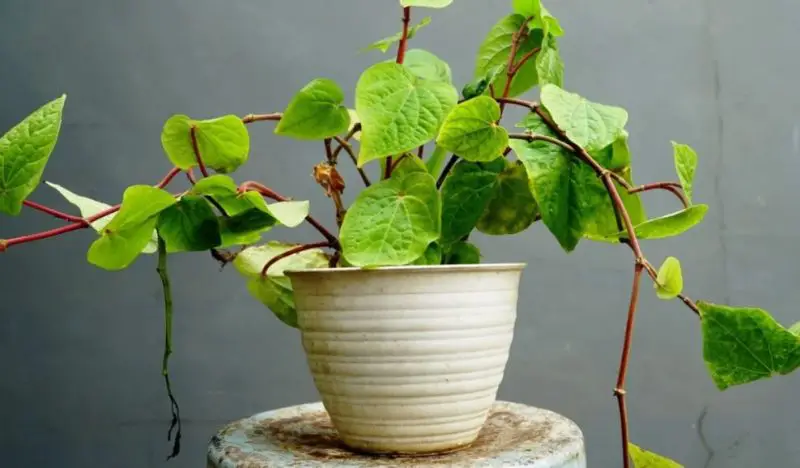
The textured leaves of the Piper betle (betel leaf plant) contribute to its appeal as a houseplant. It requires a little more upkeep but grows well in lower light levels and well-drained soil that is constantly moist. Mist the leaves frequently to maintain high humidity and simulate its tropical habitat. Pruning encourages thick growth, which improves the appearance. A touch of tropical elegance may be added to any indoor environment with the right care for the Betel Leaf Plant.
Mandevilla
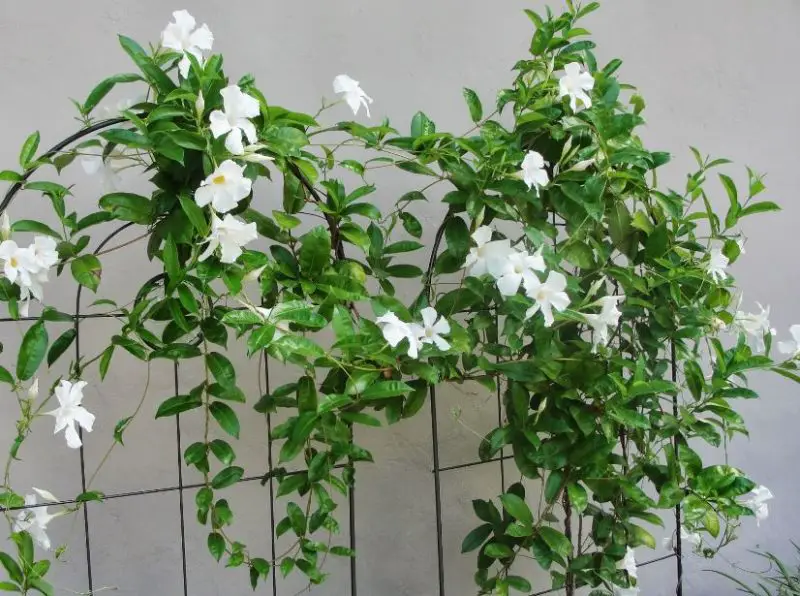
Mandevilla splendens plants are relatively low-maintenance and feature beautiful red foliage in addition to vivid pink blossoms. To keep the flowers alive, water frequently and use well-draining soil to ensure their happiness. For best growth, place in bright indirect light. Take off withered flowers to save energy. Mandevilla splendens enhances any indoor or outdoor area with style and color when cared for properly.
Marble Queen Pothos
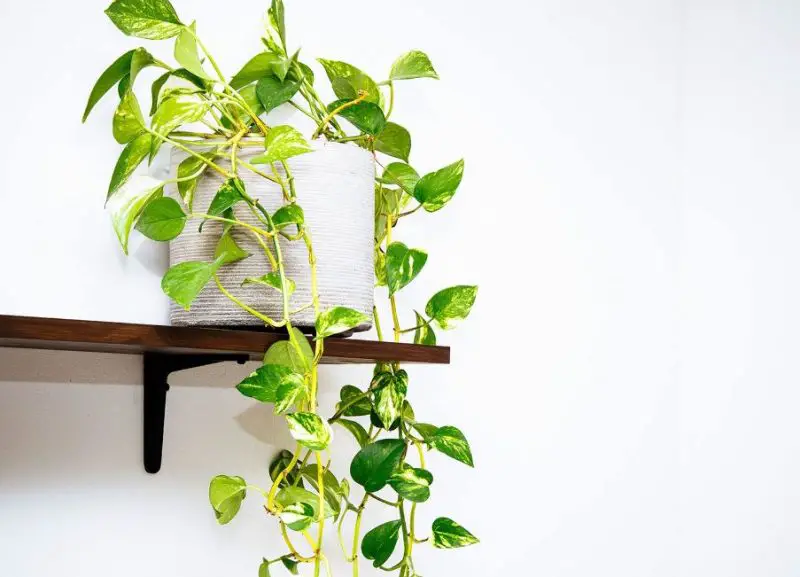
The Marble Queen Pothos, also known as Epipremnum aureum “Marble Queen,” is a low-maintenance and aesthetically pleasing type. It gives any area a marble-like look with its highly variegated leaves. Like other varieties of pothos, it needs to be watered once the top few inches of soil have dried out and grows best in bright, indirect light. Pruning lanky vines encourages denser growth so that its beauty spills gracefully onto your counter from their container.
Bougainvillea
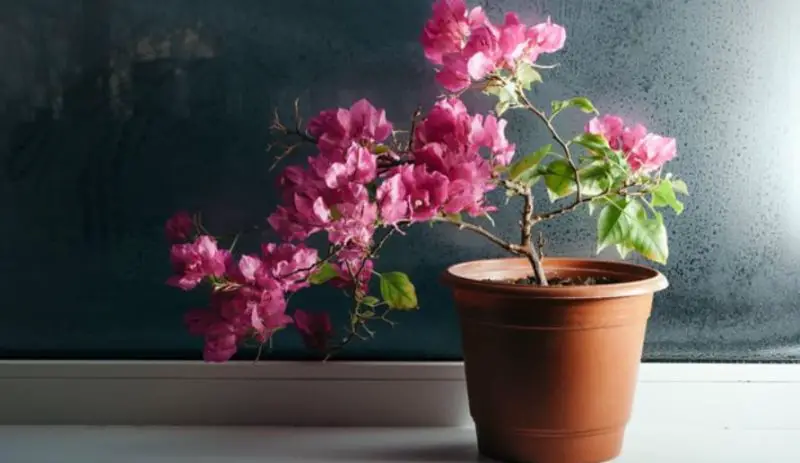
Famous for its vivid blossoms, bougainvillea (Bougainvillea spp.) grows best indoors with plenty of access to strong, direct sunlight. For best results, plant this tropical climber close to a windowsill that receives plenty of sunlight. Water when the topsoil dries out, and spritz the leaves frequently in the winter to keep the humidity levels up. When given the necessary care and exposure to sunlight, bougainvillea will never stop blooming and bringing a splash of color and beauty to any indoor area.
Beautiful Pink Jasmine
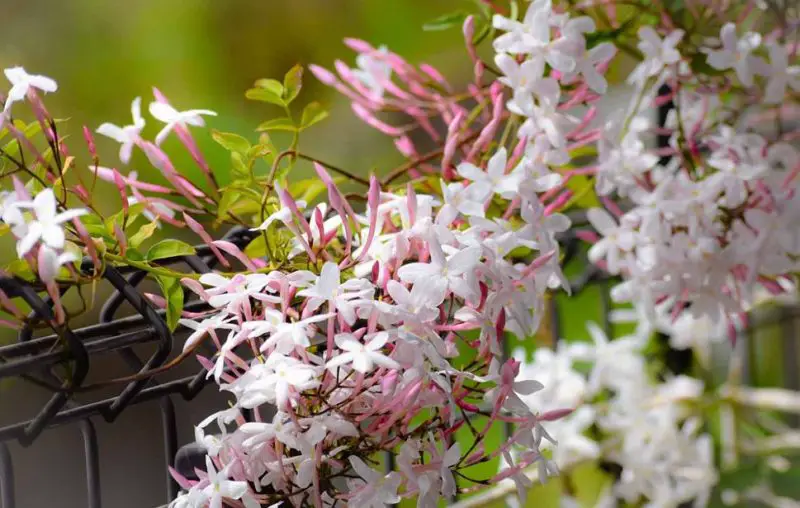
Beautiful pink jasmine (Jasminum polyanthum) is a jasmine cultivar that grows well indoors. It grows best in indirect, strong light, but it can also thrive in indoor grow lights. To promote prolific flower growth, water the soil when it dries out and fertilize once a month while it’s growing. Pink jasmine brightens your home with its gorgeous flowers up close and adds scent and beauty to any indoor space with its stunning blooms and low maintenance requirements.
Begonia Lucerna
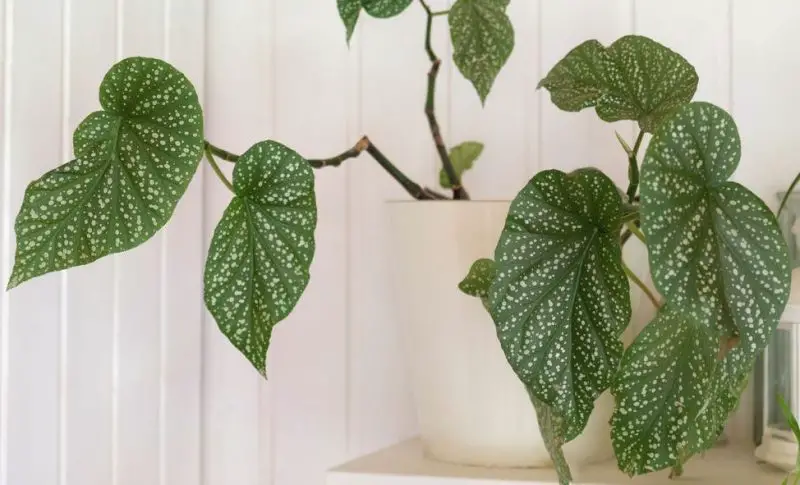
Begonia Lucerna, or angel wings, are fascinating houseplants with a variety of growth habits. During the growing season, provide fertilizer rich in phosphorus and offer bright, indirect light to encourage flowering. As an alternative, use a nitrogen-rich fertilizer and plant foliage in lower light levels to highlight it. When the topsoil dries out, add water. Angel Wing Begonias are a stunning sight against a black backdrop, lending beauty and elegance to any interior setting.
Hoya-like Kangaroo Pocket Plant
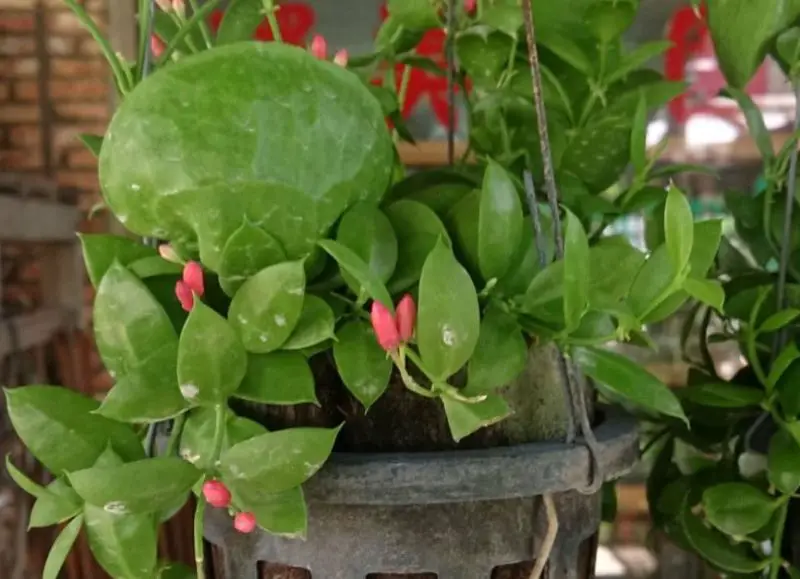
The Hoya-like Kangaroo Pocket Plant (Dischidia vidalii) is a lush climber with heart-shaped leaves that are long and thick. It doesn’t need strong or direct sunlight to thrive; it can survive in lower light levels. To prevent overwatering and promote plant growth, water the topsoil when it starts to dry up. The Kangaroo Pocket Plant brings a bit of charm to any indoor environment without requiring direct sunlight, thanks to its distinctive foliage and thick growth.
Maidenhair Vine
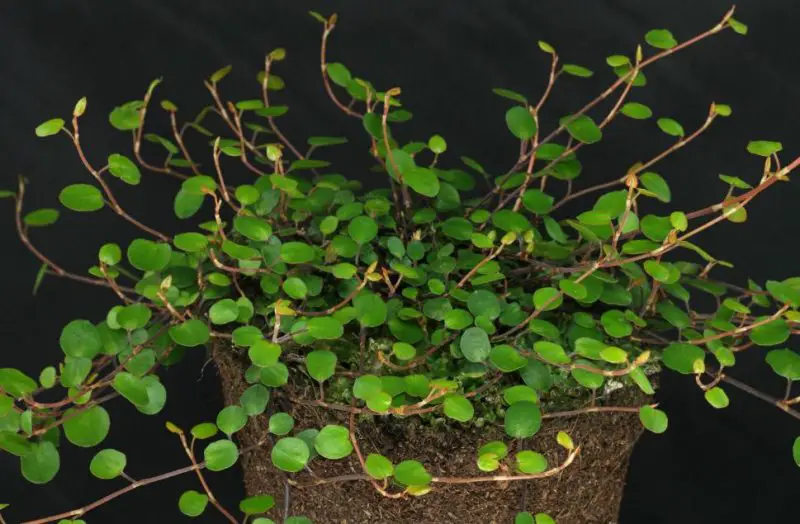
The maidenhair vine, or angel vine (Muehlenbeckia complexa), has thick vines with tiny heart-shaped leaves. It can reach a height of three feet and blossom if given the right conditions. When the topsoil dries out, place it somewhere with lots of bright, direct sunlight and water. Make sure it gets enough sunshine by keeping an eye out for blossoms and robust leaf growth. Take in Maidenhair Vine’s exquisite elegance against a pale blue background.
Mini Monstera
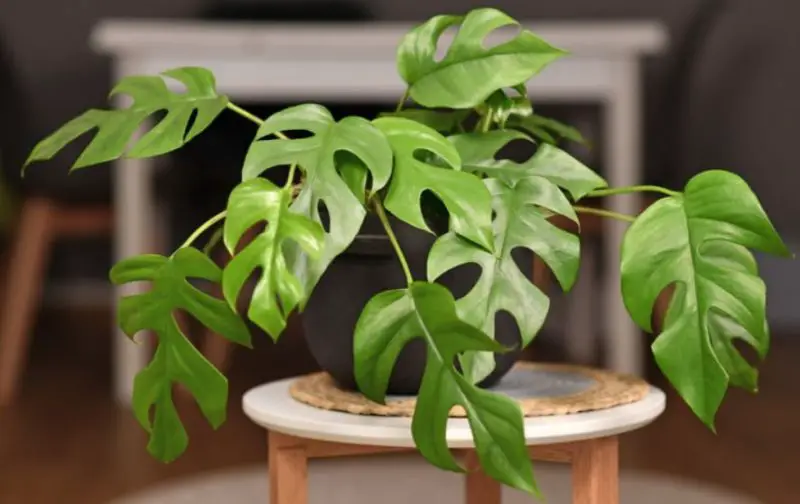
For lovers of indoor plants, the Mini Monstera (Rhaphidophora tetrasperma) is a popular option. Reminiscent of small monsteras, this unrelated plant grows quickly and requires little care. Growing abundantly under bright, diffused light, it will cling to any adjacent surface. To keep the soil and foliage at high hydration levels, water when the soil seems dry. Misting the leaves in the winter promotes healthy growth. Take in the elegance of the Mini Monstera sitting on a stool in its brown container.
Swiss Cheese Plant
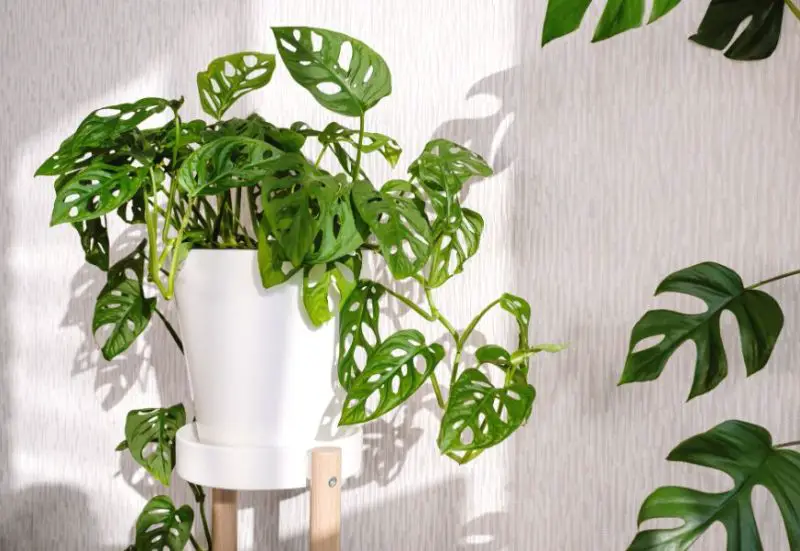
An indoor favorite, the Swiss cheese plant (Monstera adansonii) is prized for its attractive foliage and ease of upkeep. This tropical plant, which is native to Central and South America, loves bright, indirect light. It needs high humidity and moisture levels to stay healthy, frequent misting of its leaves in the winter, and persistently moist but well-draining soil. With the right maintenance, it may thrive and improve your home environment.
Creeping Fig
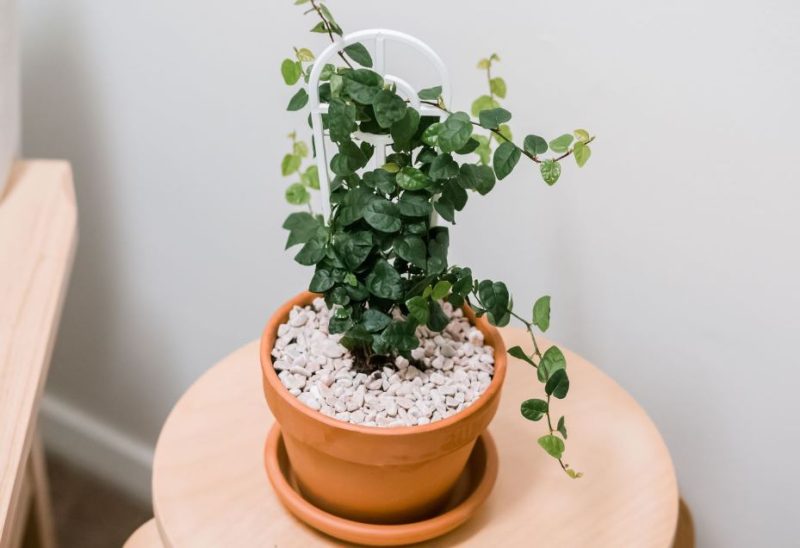
With its white-edged leaves, the Creeping Fig (Ficus pumila) is a popular choice for indoor vine growth and landscaping. The growth of this low-maintenance plant starts out slowly but quickens as it ages. Keep it fairly moist, letting the soil dry between waterings, and position it in bright, diffused light for best care. Sufficient care promotes consistent growth and improves indoor vegetation.
Micans Philodendron
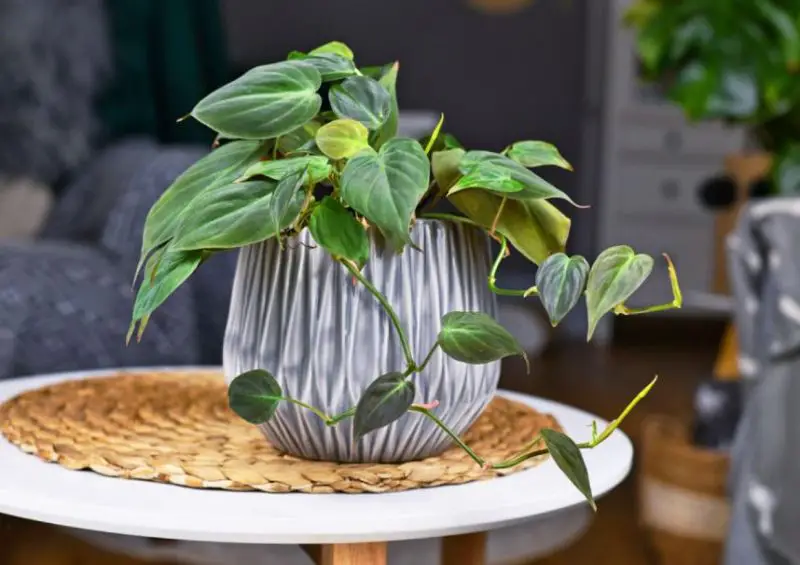
Low-maintenance and quick-growing, the Micans Philodendron (Philodendron scandens ‘Micans’) is a tropical climber that looks great when planted in hanging planters. It needs a little less direct light than other plants since too much sun might scorch its fragile leaves. In order to maintain its health and vigorous growth, water it anytime the top two inches of soil become dry. This will help prevent overwatering and root rot.
English Ivy
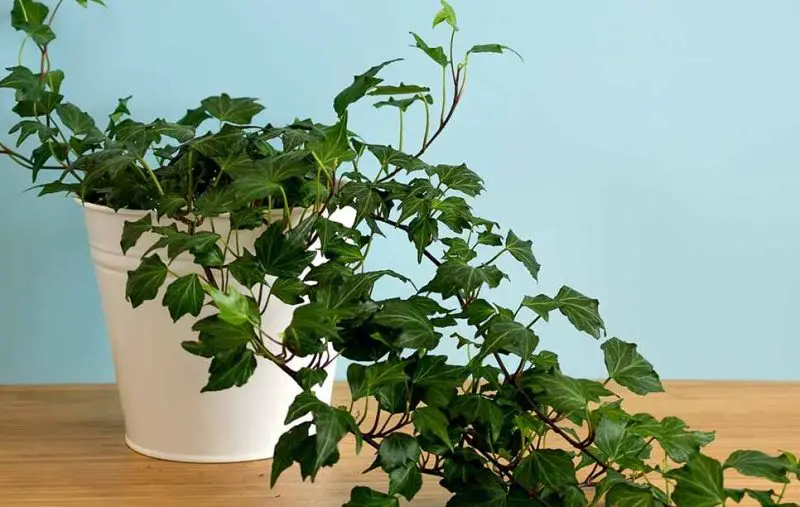
Though it is invasive outside, English ivy (Hedera helix), particularly the yellow-bordered ‘Goldchild’ variation, may make a beautiful houseplant. Because it thrives in shade, this incredibly low-maintenance climber is perfect for less sunny regions of your home. Regularly water the soil when it’s dry. While occasional misting and humidity are beneficial to young plants, they can usually grow just fine without them.
Black-Eyed Susan Vine
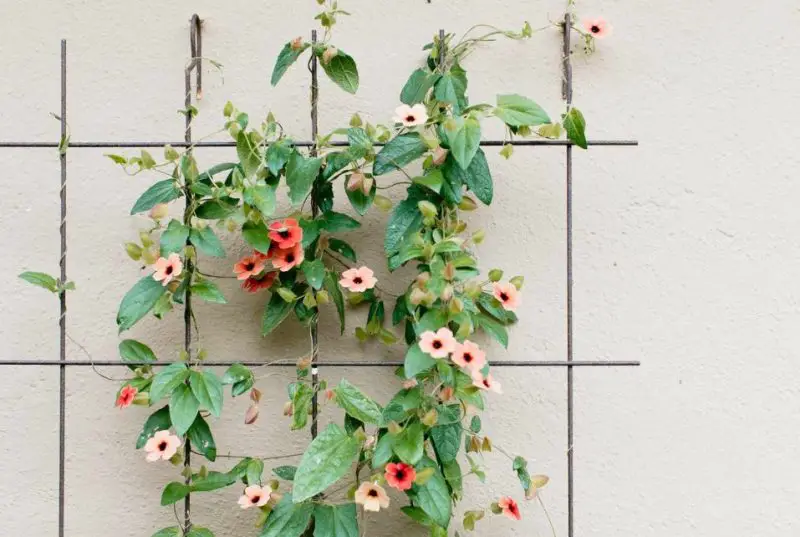
Beautiful and rewarding, the Black-Eyed Susan Vine (Thunbergia alata) can bloom inside in the wintertime, provided it is kept above 60°F and receives full sun. This sun-loving plant requires regular watering to keep the soil moist. Although it usually produces orange flowers, there are different color variants. It adds color to any indoor garden, but its rapid growth must be controlled with regular trimming.
Angel Wing Jasmine
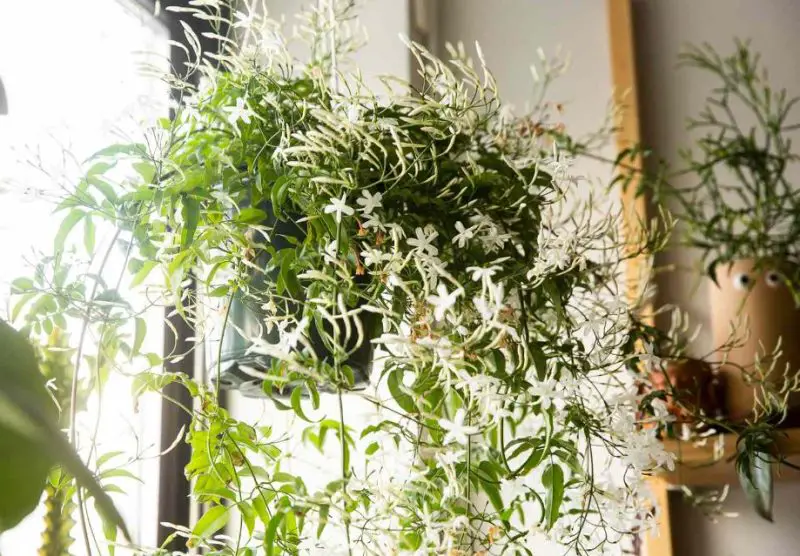
With the right maintenance, the beautiful flowering vine known as Angel Wing Jasmine (Jasminum nitidum) may provide a dramatic focal point inside. Owners of intermediate or advanced plants will benefit from this high-maintenance plant. Fertilize every two weeks during the growing season to promote blooming. To avoid root rot, let the well-draining soil dry in between waterings. To prevent its fragile leaves from burning, place it in bright, indirect sunlight and stay out of direct sunlight.
Syngonium Podophyllum
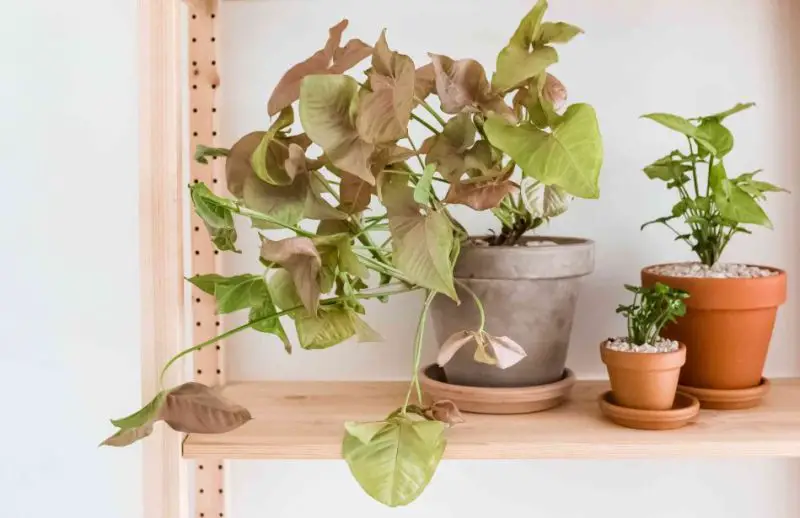
Syngonium podophyllum, or arrowhead plants, are eye-catching indoor plants with eye-catching arrowhead-shaped leaves that look great in combination displays. This low-maintenance plant can grow more slowly in less light, but it prefers bright, indirect light. Water well-drained soil frequently, and fertilize throughout the growing season to prevent overwatering. For a bushier appearance, prune often. This sun-loving plant enhances the appearance of any indoor garden and is very easy to care for.
Hindu Rope Plant
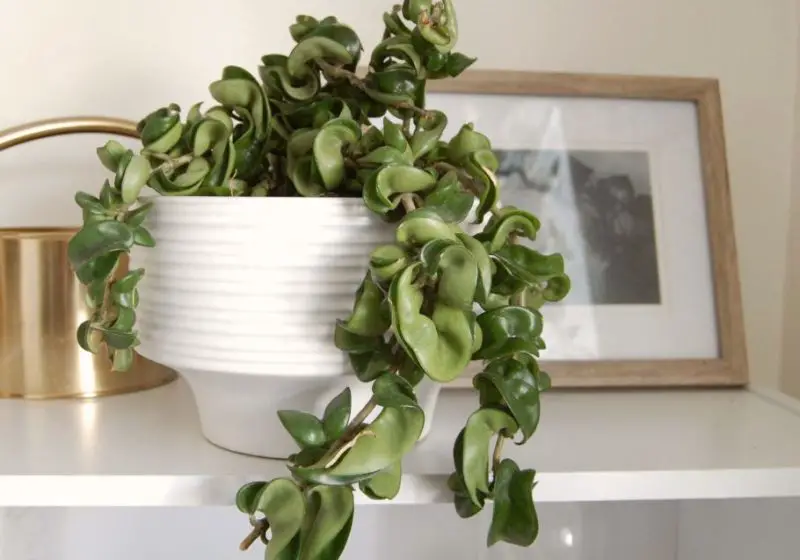
For those who are new to owning plants, the Hindu Rope Plant (Hoya carnosa ‘Compacta’) is an entertaining but somewhat expensive addition to any collection of indoor plants. When given the right care and enough sunlight, these semi-succulents can produce eye-catching, waxy vines that bloom frequently. They require infrequent watering, much like all other succulents, to avoid root rot. They also prefer bright, indirect light and well-draining soil. Because they grow slowly, they are ideal for tiny places because they won’t outgrow their containers too soon.
Chinese Money Plant
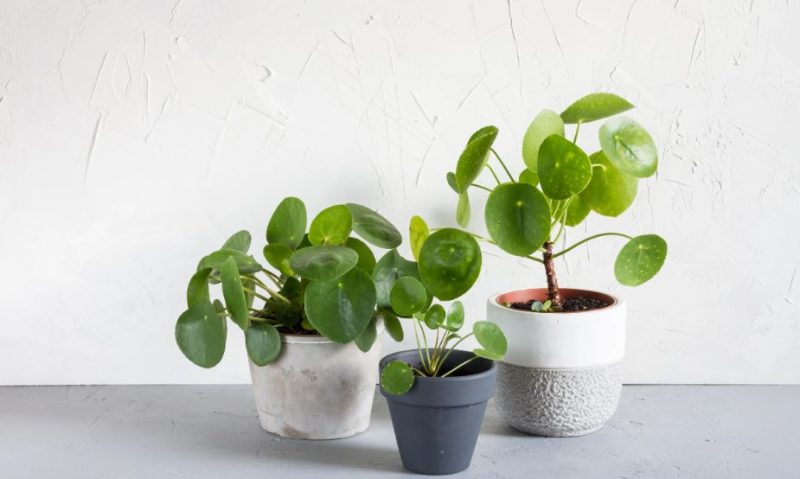
With its circular leaves, the Chinese Money Plant (Pilea peperomioides) is a well-liked and low-maintenance houseplant. To prevent leaf burn, place it in bright, indirect light. When the soil almost completely dries out between waterings—as shown by the leaves curling and turning inward—you can prevent overwatering. This lovely plant brightens any interior space with a hint of prosperity and greenery with very little upkeep.
Kangaroo Vine
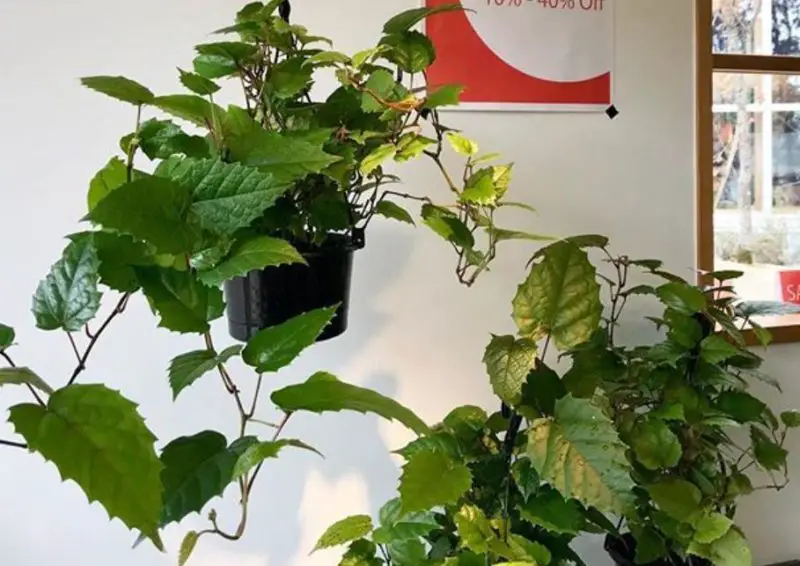
The kangaroo vine (Cissus antarctica), with its vining habit and low light requirements, makes a great addition to any collection of houseplants. Select an area in your house that will remain unchanged once these plants are established. Regular pruning will keep leggy vines growing lushly. A beautiful addition to any indoor environment, the Kangaroo Vine requires little care and maintenance to bring greenery and elegance.






